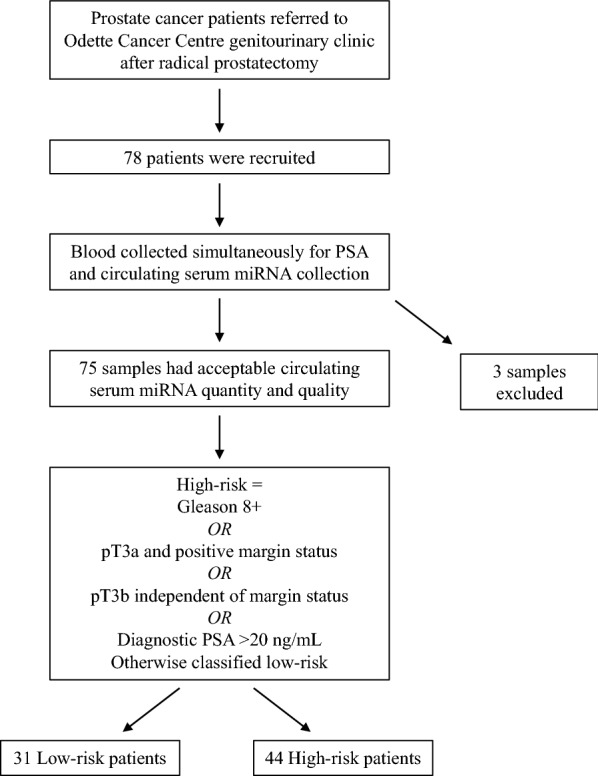Fig. 1.

Patient sample collection workflow. Seventy-eight post-radical prostatectomy prostate cancer patients who were referred to a genitourinary clinic at Odette Cancer Centre were prospectively recruited. Blood for PSA monitoring and isolation of circulating miRNAs was collected simultaneously (median time of 9 months after radical prostatectomy). Seventy-five serum samples, yielding acceptable quantity and quality, were used for downstream NanoString nCounter analysis. Gleason score, pathological T stage, margin status, and diagnostic PSA level were used to stratify patients into low-risk (n = 31) and high-risk (n = 44) categories
